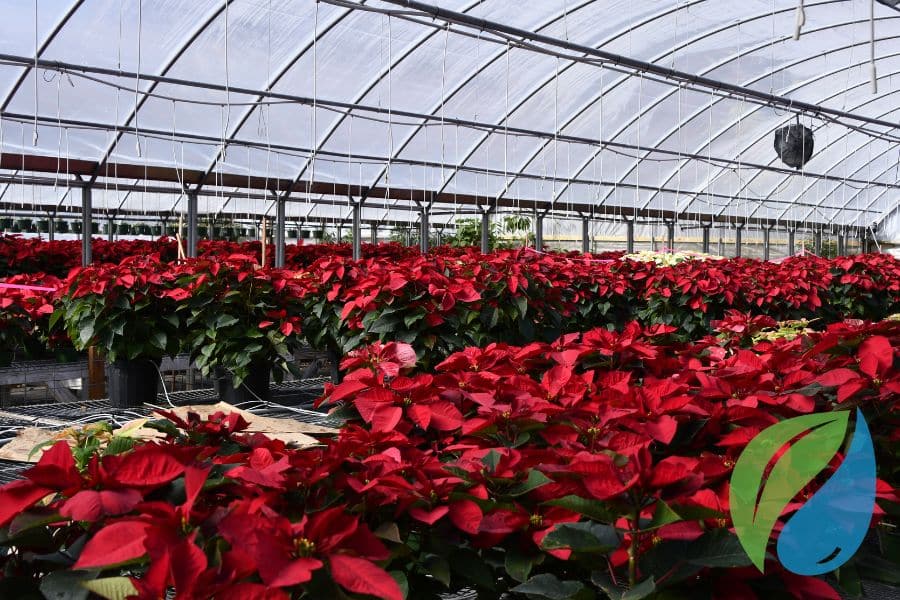Micronutrients are essential elements that plants require in small amounts for their overall health. In the context of plant health, micronutrients refer to nutrients like iron, zinc, manganese, copper, and boron that play a crucial role in various plant functions. These elements are vital for proper growth, development, and overall plant vigor.
Macronutrients and Micronutrients
There really isn’t any competition or versus. Both are needed for optimum plant health. In combination, macronutrients and micronutrients are the building blocks of plant and soil health.
Macronutrients and micronutrients are two different classifications of nutrients that are required by plants. Macronutrients, including nitrogen, phosphorus, and potassium, are needed in larger quantities compared to micronutrients. They are mainly responsible for providing energy, promoting growth, and supporting overall plant structure. On the other hand, micronutrients are required in smaller amounts but are equally essential for various metabolic functions within the plant.
Too much, or too little, of a micronutrient impacts the ability of plants to uptake macronutrients. There are complex cross-talks between the micro and macro elements within the plant.
Scientists from multiple disciplines study what is referred to as ionomic composition, or the “mineral nutrient and trace-element composition of a living organism.” (1)
As growers, we need to be aware of the complexity of plant systems. All nutrients are essential, some just in greater amounts than others. Trace elements are key to optimum crop production.
Common Micronutrients Needed for Plant Health
Let’s take a closer look at the micronutrients your plants need to thrive.
Iron: Essential for Photosynthesis
Iron is the fourth-most abundant element on Earth, but it’s often found in a form not available for plant nutrient intake. Iron is essential for chlorophyll formation, which plays a central role in photosynthesis. Iron is also involved in plant respiration and oxygen transportation within the plant.
Zinc: Necessary for High Yields
Zinc is crucial for enzyme function and hormone regulation. It aids in the synthesis of proteins and DNA. Although very small amounts are needed, the growth and development of plants stop without the enzymes made available by zinc. Plants can handle more cold weather with the proper amount of zinc.
Manganese: Coefficient of Enzyme Activation
Manganese is necessary for photosynthesis and nitrogen metabolism. A deficiency in manganese may show up as nitrogen deficiency because of how closely micro and macronutrients are bound. It also helps in the activation of enzymes required for various plant functions.
Copper: for Strong Plant Immune Systems
Copper is involved in plant metabolic processes and plays a prominent role in disease resistance. It is necessary for the formation of lignin, an important component of cell walls.
Boron: for Strong Cell Membranes
Boron is critical for proper cell wall formation and reproductive development. It is essential for the production of plant hormones and the transport of sugars.
Signs of Micronutrient Deficiencies in Plants
Visual symptoms of micronutrient deficiencies can vary, but common signs include yellowing or chlorosis of leaves, stunted growth, poor fruit development, and limited root growth. These deficiencies can impact overall plant health and productivity, leading to decreased yields and lower resistance to pests and diseases.
Iron deficiency shows up as chlorosis. Iron is taken up by plants as the ferrous cation. It’s best to supplement your plants with a foliar spray with a sticker-spreader agent to improve absorption by the plant through the leaves to correct any iron deficiency.
Zinc deficiency shows up as chlorosis. The symptoms are first noticed in young leaves. Malformed leaves are also a symptom. Chelated zinc as a foliar spray is recommended.
Manganese deficiency occurs when pH is high. Many nutrients are unavailable to plants for uptake and correcting pH is a first step in correcting many deficiencies. As in other micronutrient deficiencies, lack of manganese shows up as yellowing of the leaves and interveinal chlorosis.
Copper deficiency manifests as yellowing leaves, stunted growth, abnormal root development, and brittle leaves. The upper young leaves are the first to show symptoms. It’s important to keep the pH in the range of 5.5–6.5 for nutrient absorption by plants.
Boron deficiency is more common when there is a lack of moisture. Distortion of the growing tip, discolored new growth, and yellowing of lower leaf tips are all symptoms of a boron deficiency. It shows up in fruits and vegetables as poor fruit development and internal rot. Stress, abiotic and biotic, are common causes of boron deficiencies. The best way to improve boron intake is with a foliar spray of boronic acid. However, too much is toxic.
These are only some of the micronutrients needed for optimum plant growth. The ones we’ve discussed are often supplied by a compound fertilizer. But plant health is complex, and optimal growth also includes molybdenum, calcium, nickel, chloride, and many more.
The symptoms of micronutrient deficiency in your plants are quite similar. Often they are caused by an imbalance of the ratios of nutrients themselves. Again, you can have too much, or too little, of a good thing. A recurring theme in micronutrient deficiency is potting medium pH being too high or too low.
Excess phosphorus in the potting medium reduces plant uptake of many micronutrients, including iron and zinc. Phosphorus isn’t mobile, so it doesn’t leach out of the soil. If soil tests show high levels of phosphorus in your potting medium, stop using any fertilizers that have a phosphorus component. For example, use ammonium sulfate or magnesium sulfate instead of your conventional phosphate fertilizer.
Soil tests for trace elements are needed to determine if mineral supplements are needed. It’s easy to get too much of a good thing. Imbalances, such as excess macronutrients or deficiencies in micronutrients, can result in nutrient lockout, where the plant is unable to absorb essential nutrients properly. Nutrient lockout can negatively impact plant growth and health.
Sources of Micronutrients for Plants
Micronutrients can be obtained naturally through potting medium and organic matter. However, in some cases, the medium may be deficient in certain micronutrients, requiring supplementation through fertilizers. Liquid fertilizers are proving more efficient for precision soil amendment programs.
Soil pH has an impact on micronutrient availability. A high-pH soil fixes nutrients in unavailable forms for plant uptake. Soil tests for pH can help you determine whether you should use an in-soil or foliar fertilization method.
Micronutrient fertilizers are specially formulated to provide plants with the required elements. Foliar sprays, which allow direct absorption by the leaves, bypass soil deficiencies. There are other advantages to foliar spraying. The application rate is lower and a more uniform application is possible.
Methods to Improve Micronutrient Availability
Before you take any other action, soil tests are critical. Most common tests are for the macronutrients NPK. But by using the Haney test or the Phospholipid Fatty Acid (PFLA)test, you’ll also get the amount of organic matter and microbial life.
A balanced potting medium has high organic matter, active microbial populations, and good soil structure. All go towards decreasing excesses and increasing nutrient availability. The pH level of the soil affects micronutrient availability. Adjusting soil pH to the appropriate range for specific plants can enhance the uptake of micronutrients.
Chelating agents can be used to enhance micronutrient uptake by plants. These agents bind with micronutrients, making them more available, and easily absorbed by plant roots. Most fertilizer mixes can be bought with chelated nutrients so they’re applied in the correct nutrient content for plant absorption.
What’s Your Plan for Next Year?
Micronutrients are vital for the healthy growth and development of plants. Neglecting their importance can lead to deficiencies and poor plant performance. It’s good business sense to pay attention to micronutrient needs to ensure improved plant growth, increased productivity, and overall robustness.
One of the positive side effects of healthy plants is easier pest management. Bugs don’t like healthy plants.
Foliar feeding of mineral supplements can give you quick results for a micronutrient deficiency Spray early in the morning or the evening when the stomata are open. But there are limiting factors. One of them may be the pH of your water. So, while you’re getting your soil tested be sure and have your water checked, too.
The fertilizer industry is there to help you over a tough spot, but plants are incredibly complex. Nutrient intake is impacted by biotic and abiotic factors. Address the underlying problems and you’ll spend less on inputs with better plant production.
To find out more about micronutrients and your operation, get in touch with the experts at Phyton Corp today.




